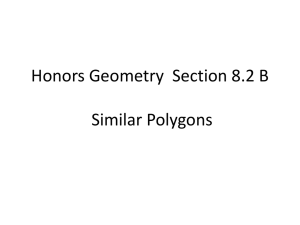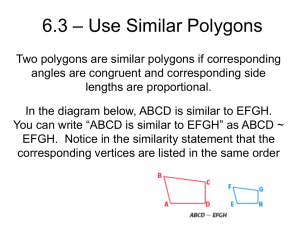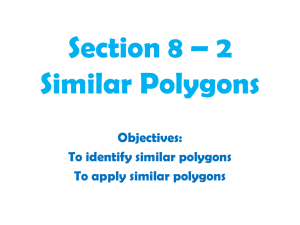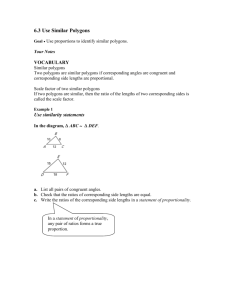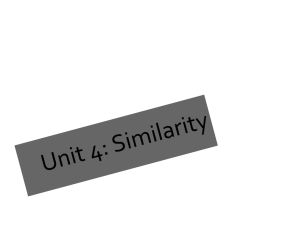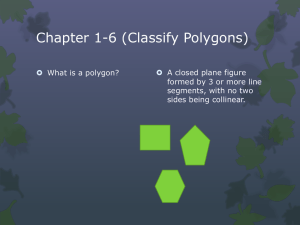Chapter 6.3 Notes: Use Similar Polygons
advertisement
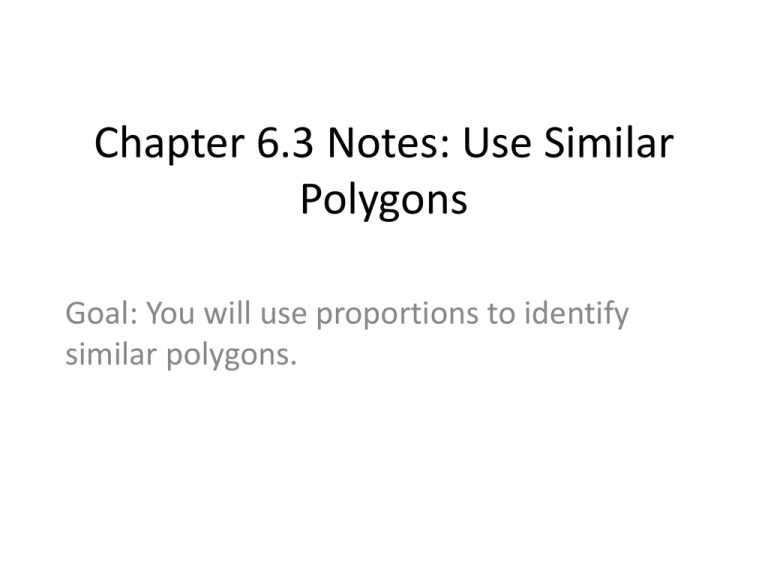
Chapter 6.3 Notes: Use Similar Polygons Goal: You will use proportions to identify similar polygons. • Two polygons are similar polygons if corresponding angles are congruent and corresponding side lengths are proportional. i.e. ABCD is similar to EFGH is written as ABCD EFGH . Ex.1: In the diagram, ∆RST ~ ∆XYZ. a. List all pairs of congruent angles. b. Check that the ratios of corresponding side lengths are equal. c. Write the ratios of the corresponding side lengths in a statement of proportionality. Ex.2: Given ∆JKL ~ ∆PQR, list all pairs of congruent angles. Write the ratios of the corresponding side lengths in a statement of proportionality. Scale Factor • If two polygons are similar, then the ratio of the lengths of two corresponding sides is called the scale factor. Ex.3: Determine whether the polygons are similar. If they are, write a similarity statement and find the scale factor of ZYXW to FGHJ. Ex.4: In the diagram, ∆DEF ~ ∆MNP. Find the value of x. Ex.5: In the diagram, ABCD ~ QRST. a. What is the scale factor of QRST to ABCD? b. Find the value of x. Perimeters • The ratio of lengths in similar polygons is the same as the scale factor. • Theorem 6.1 Perimeters of Similar Polygons: If two polygons are similar, then the ratio of their perimeters is equal to the ratios of their corresponding side lengths. Ex.6: A town is building a new swimming pool. An Olympic pool is rectangular with length 50 meters and width 25 meters. The new pool will be similar in shape, but only 40 meters long. a. Find the scale factor of the new pool to an Olympic pool. b. Find the perimeter of an Olympic pool and the new pool. Corresponding Lengths • Corresponding Lengths in Similar Polygons: If two polygons are similar, then the ratio of any two corresponding lengths in the polygon is equal to the scale factor of the similar polygons. Ex.7: In the diagram, ∆TPR ~ ∆XPZ. Find the length of the altitude PS. Ex.8: In the diagram, ∆JKL ~ ∆EFG. Find the length of the median KM.
